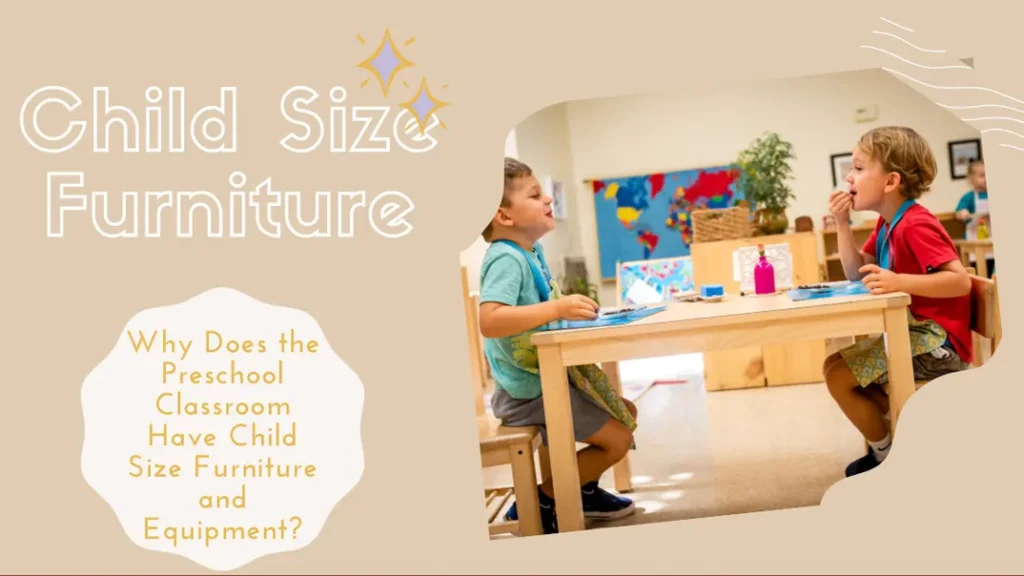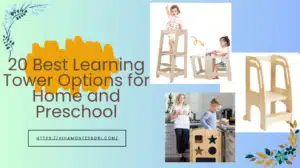Walk into any preschool classroom and you’ll immediately notice something: child-sized furniture and equipment. This is not by accident or for aesthetic purposes. There’s a specific reason behind it. In this article, we’ll dive into why, exploring the importance of child-sized furniture and equipment in preschool classrooms.
Child size furniture in preschools isn’t just a design choice – it’s a necessity. These pieces are scaled to fit little bodies, ensuring comfort and safety. More importantly, they empower children to be independent and confident in their learning environment. Prioritize the creation of environments where children can move freely, have easy access to materials, and participate in activities at their level that promote their learning and development.
When young children can interact with their surroundings comfortably, it promotes exploration, creativity, and problem-solving skills. Preschool child-sized furniture and equipment play a vital role in supporting the development and growth of young children.
Benefits of Child Size Furniture and Equipment
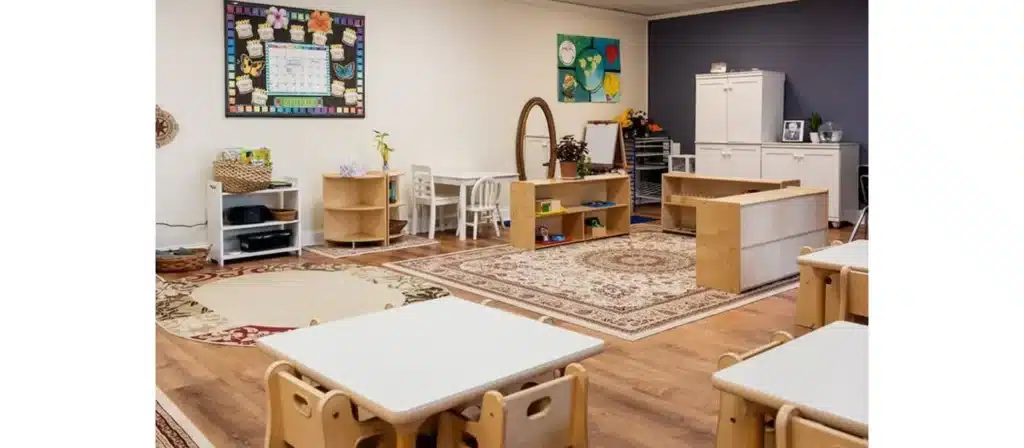
- Child size furniture promotes independence: Children can move and use furniture independently when scaled to their size. This promotes self-reliance and can boost their self-esteem.
- Enhances motor skills development: Child-size furniture is designed for children to use, which helps them develop fine and gross motor skills. For example, a low table and chairs allow children to practice sitting down and standing up independently.
- Provides a comfortable and safe learning environment: Child size furniture provides a comfortable and safe preschool environment for young children. It prevents accidents and allows children to focus on learning without worrying about discomfort.
- Encourages socialization: Child size furniture is designed to be used in groups, encouraging socialization and promoting cooperation among children. It also creates a welcoming and inviting atmosphere.
- Builds a child-centered learning environment: Using child size furniture helps create a learning environment centered around the child. This helps children feel valued and important, leading to increased engagement and participation in learning activities.
Using child size furniture in early childhood classrooms has numerous benefits for both children and educators. It promotes independence, enhances motor skills development, provides a comfortable and safe learning environment, encourages socialization, and builds a child-centered learning environment. By choosing child size furniture, educators can create a positive and engaging learning environment that promotes the growth and development of young children.
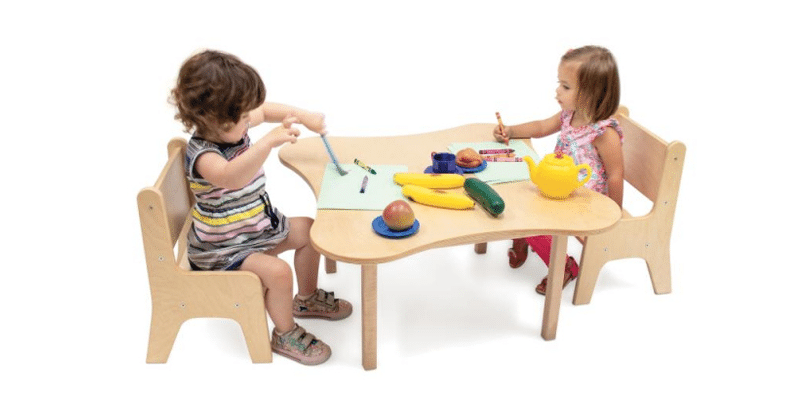
Child Size Furniture is Important
As a parent or educator, you may wonder why it’s important to use child size furniture in classrooms and homes. The truth is, child size furniture offers many benefits for children’s physical, cognitive, and social development.
Preschool child size furniture is designed with children’s needs in mind. It’s easier for children to use and manipulate furniture that is the appropriate size for their bodies. This promotes independence and a sense of ownership over their environment, as they can move and arrange the furniture as needed.
The Role of Child size Furniture in Physical Development
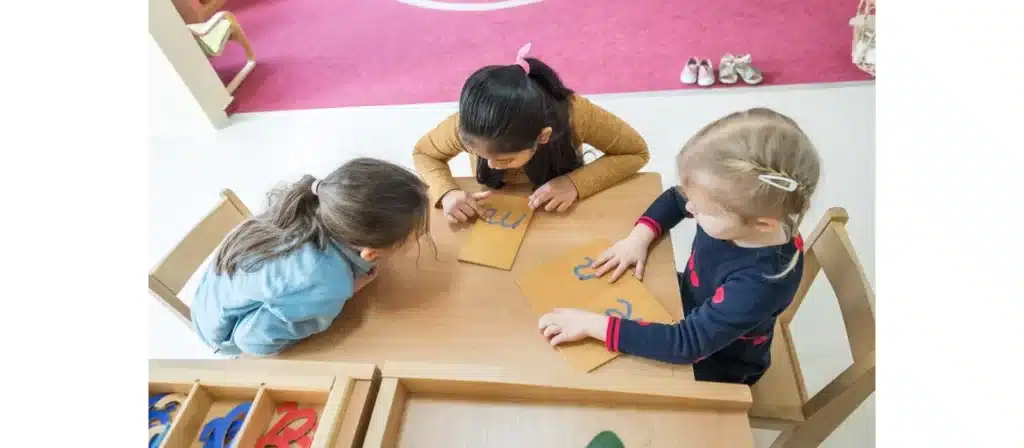
Child size furniture supports the physical development of young children by ensuring ergonomic comfort and safety, using child size furniture promotes better posture and physical development. Children’s bodies are still developing, and sitting in adult-sized chairs or using adult-sized tables can lead to poor posture, discomfort, and even long-term health issues. At the same time, just the right furniture promotes better posture and physical comfort.
Children’s size furniture and equipment help children learn and develop new skills. For example, using a child-sized table and chairs encourages socialization and collaboration, as children can work comfortably in small groups. It also promotes fine motor skills as children learn to manipulate objects on a smaller scale.
Impact on Emotional and Social Development
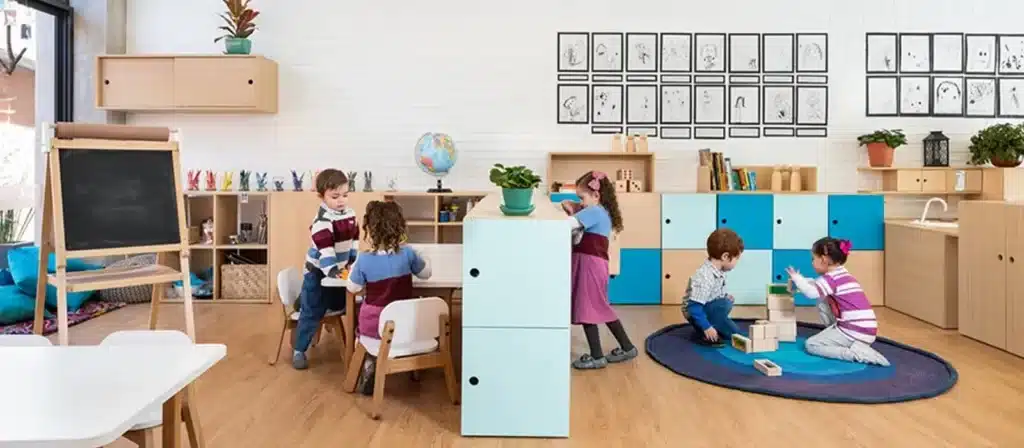
The impact of child size furniture extends beyond physical and emotional development; it also plays a pivotal role in cognitive and social growth. In a classroom where furniture is scaled to their size, children are more likely to engage in activities that develop their cognitive skills. This engagement is crucial in the early years when children develop foundational reading, writing, and mathematics skills.
The size of the furniture in a classroom impacts a child’s emotional and social development. When children feel comfortable in their physical environment, they are more likely to interact with their peers and engage in classroom activities. This comfort translates into confidence, vital for social and emotional growth.
Cognitive Benefits
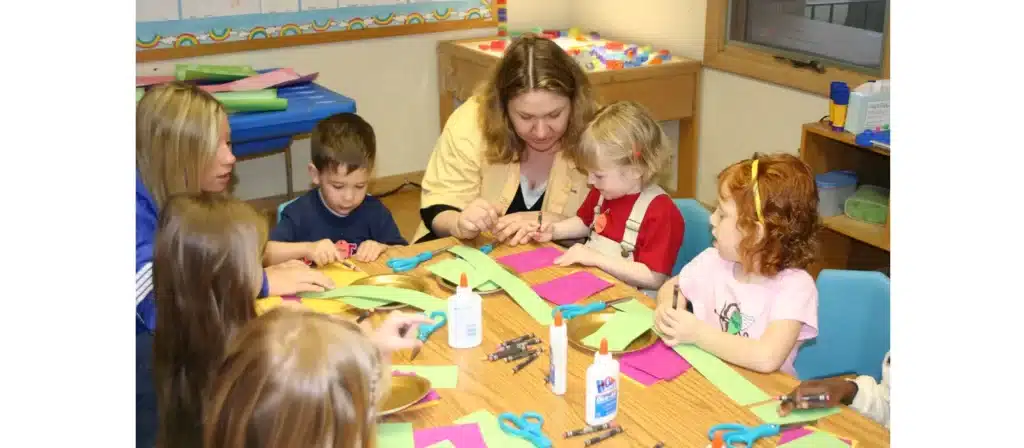
There’s a direct link between the physical environment and cognitive development in young children. They spend more time engaged in learning activities when they can easily access and use kindergarten furniture and materials. This accessibility fosters a sense of autonomy and encourages exploration, both key components of cognitive development.
Finally, child size furniture creates a more welcoming and child-friendly environment. When children are surrounded by furniture designed with them in mind, they feel more comfortable and relaxed, leading to improved focus and engagement in learning activities.
How Does Child Sized Furniture Promote Social Interaction?
- Encourages Group Activities: Tables and chairs that fit children allow for comfortable group work and social interaction, fostering teamwork and communication skills.
- Facilitates Peer Learning: When children can easily interact with their peers, it enhances peer learning opportunities, where they can share knowledge and collaborate on projects.
Examples of Child Sized Furniture and Equipment in Preschool
In a preschool classroom, child-sized furniture and equipment are tailored to be safe, accessible, and proportionate to the needs of young children. Here are some examples:
1. Tables and Chairs
These are usually low to the ground, allowing children to sit comfortably and safely with their feet flat on the floor. They often come in vibrant colors and various shapes like circles, squares, or semicircles to encourage group activities.
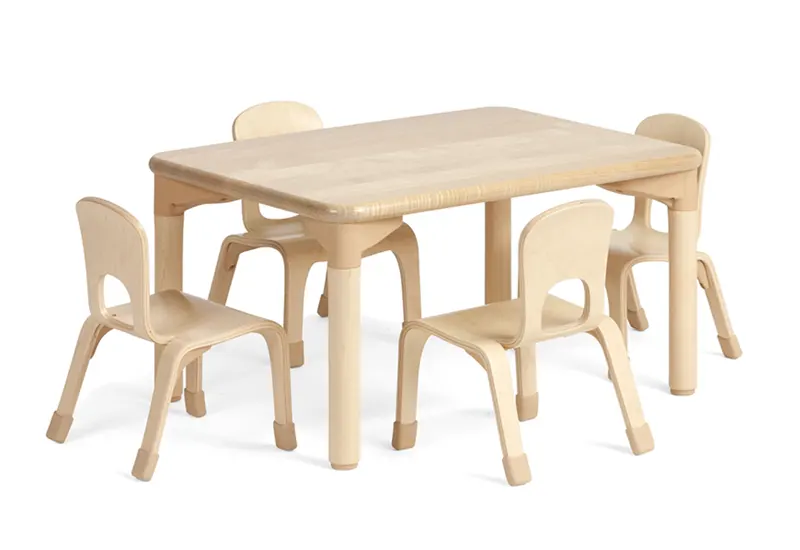
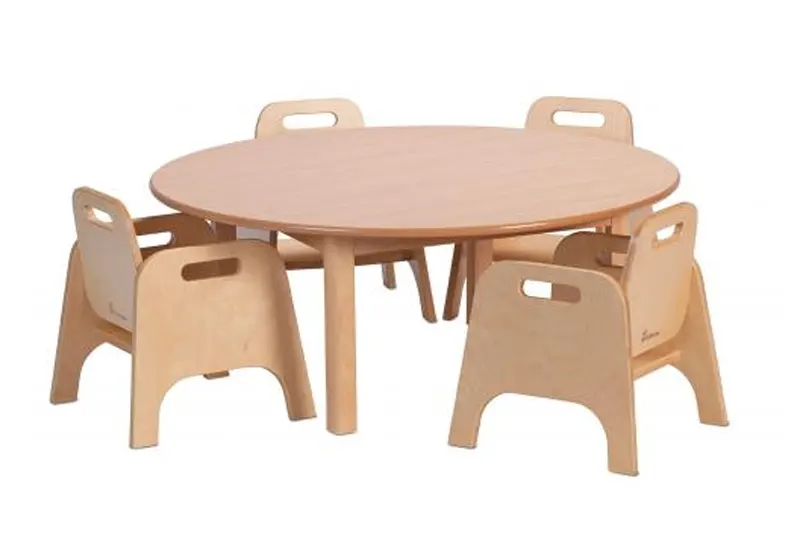
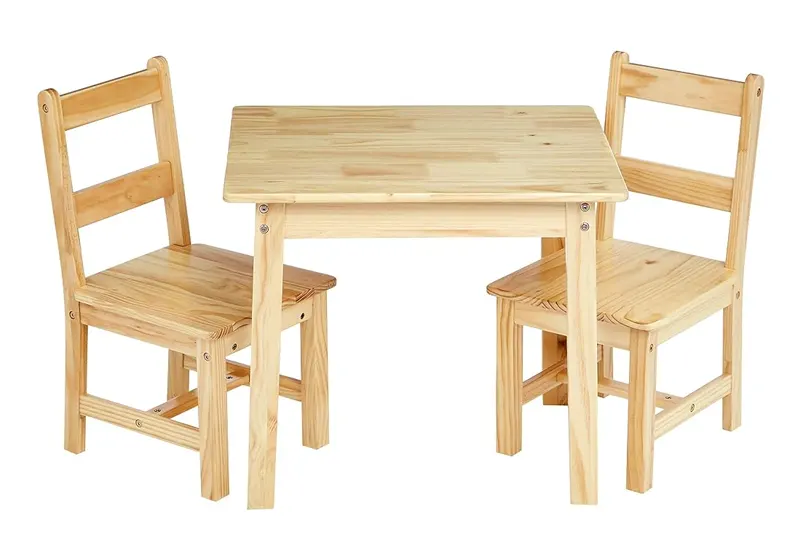
2. Storage Units
Child-sized shelves and cabinets allow children to reach and store their supplies and toys independently. These storage units typically have open shelves or clear pull-out bins.
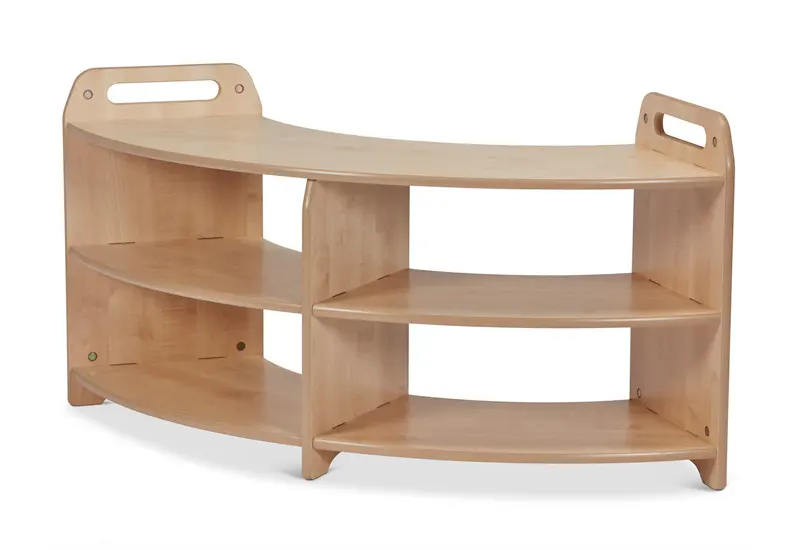
3. Reading Nooks
Small couches, bean bags, or cushioned benches provide a cozy space for reading. These areas might include bookshelves at a child’s height, with picture books and early reading materials.
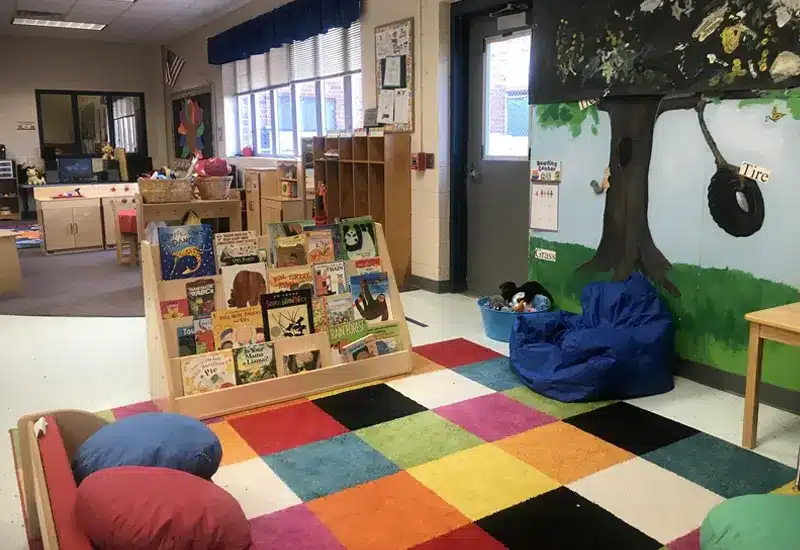
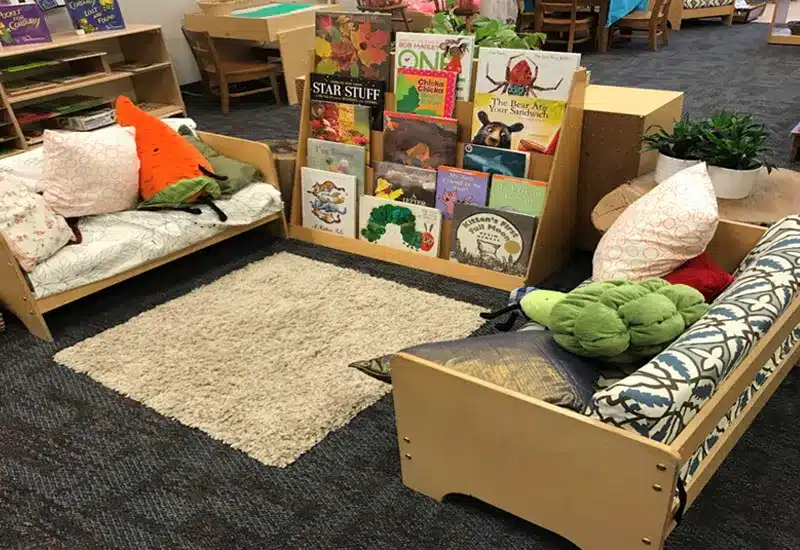
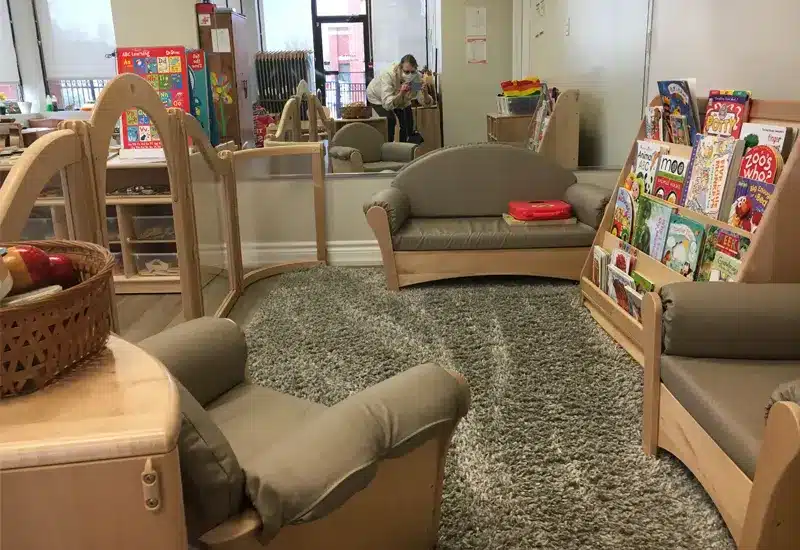
4. Play Kitchens and Dollhouses
These miniature versions of real-life settings provide a scaled environment for imaginative play. They include features like low countertops, small appliances, and tiny furniture.
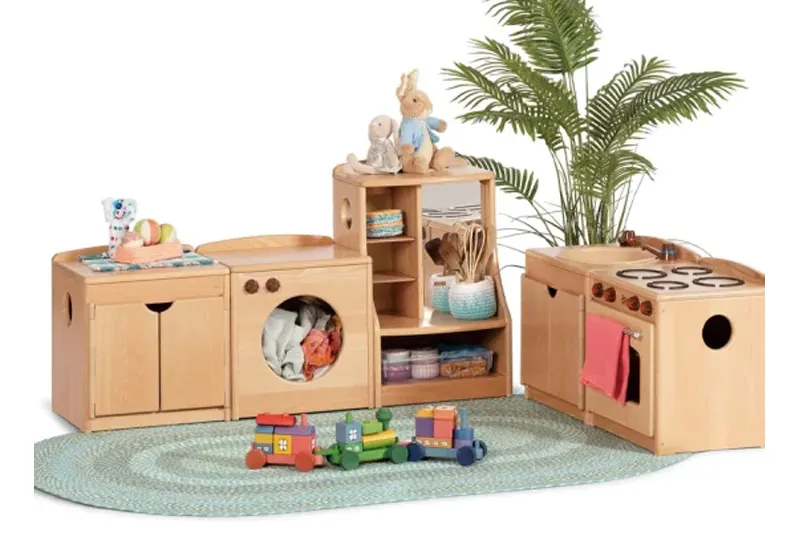
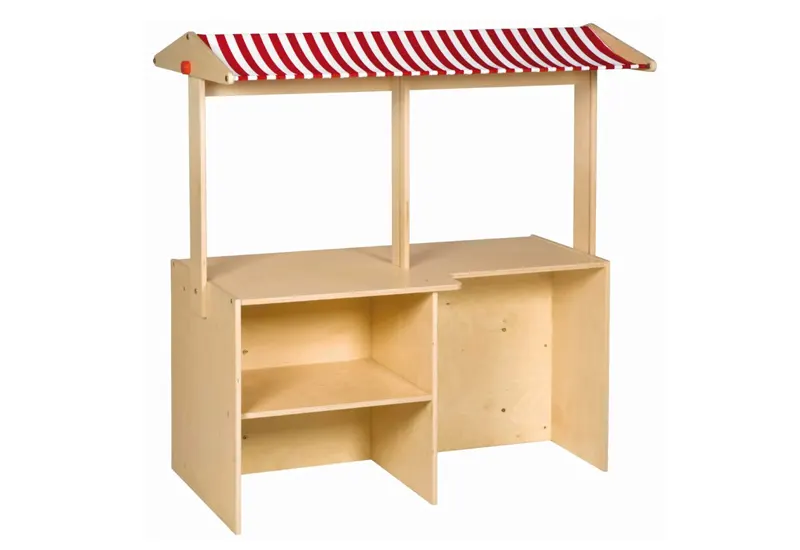
5. Art Centers
Child-height easels, small stools or chairs, and accessible shelves with art supplies like crayons, markers, and paper encourage creative expression.
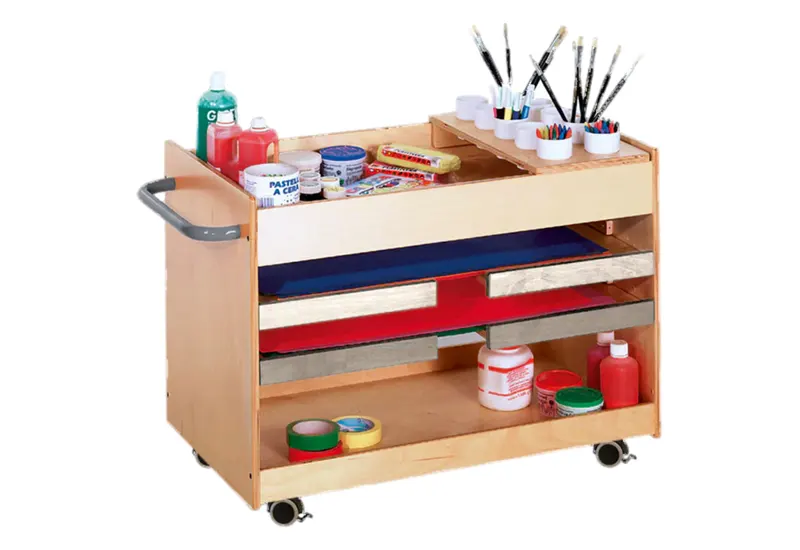
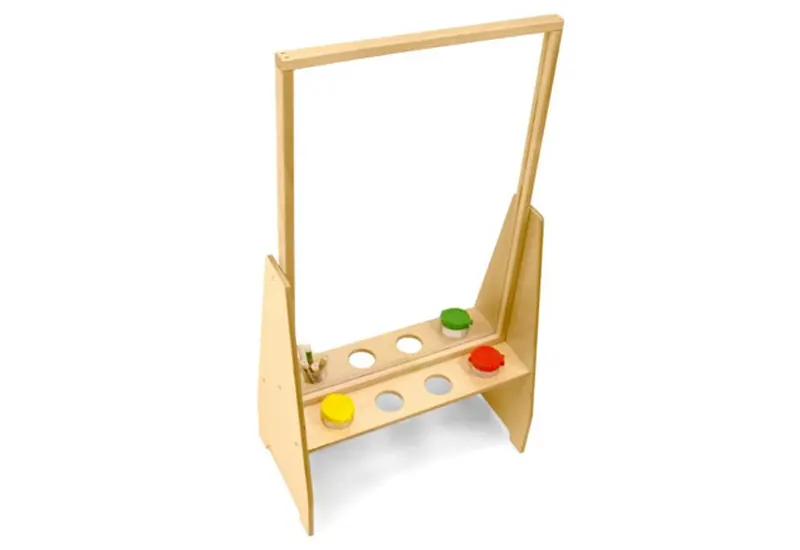
6. Nap Mats or Cots
Small, portable sleeping mats or cots are low to the ground, making them easy for children to use during nap time without assistance.
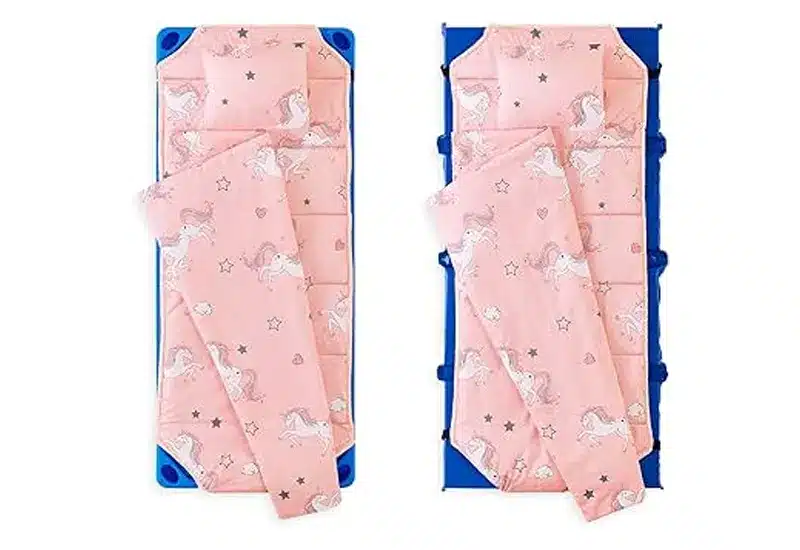
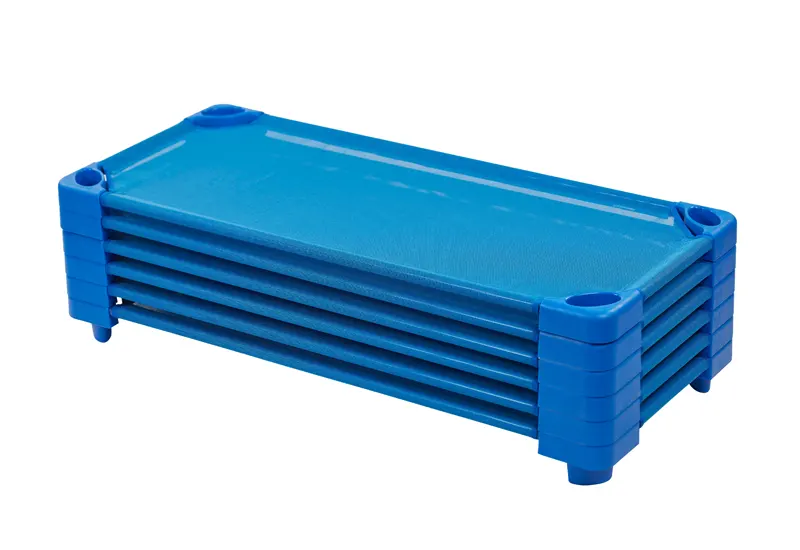
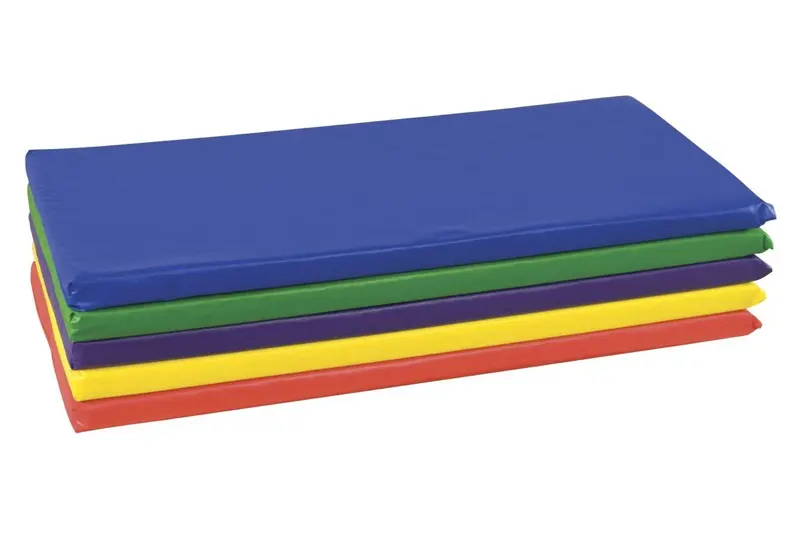
7. Climbing and Play Equipment
Indoor play equipment like small slides, tunnels, or climbing frames are designed to be safe and suitably scaled for young children to help develop their motor skills.
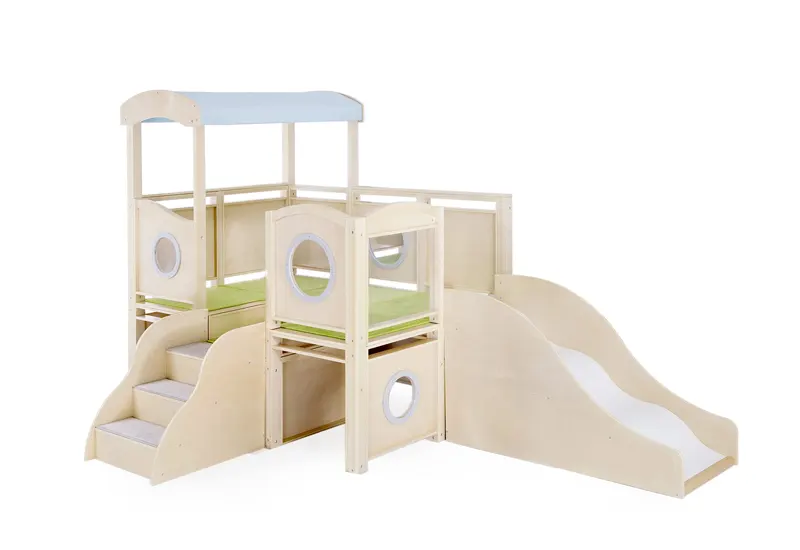
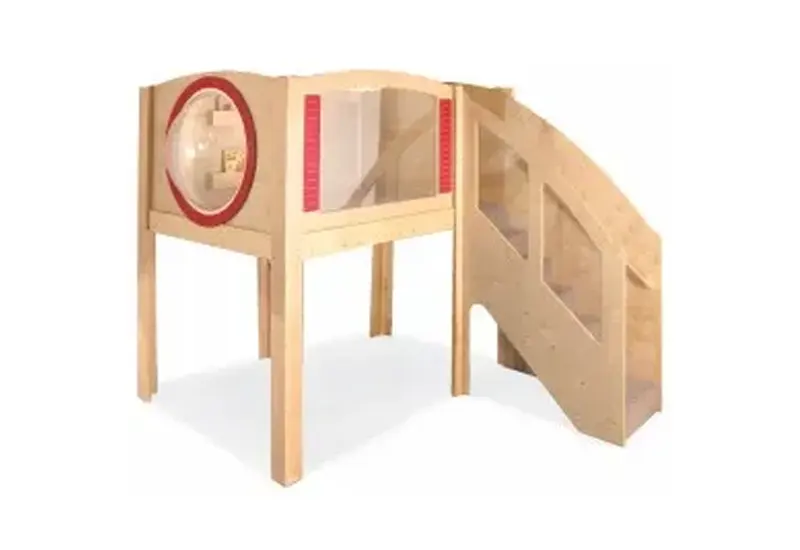
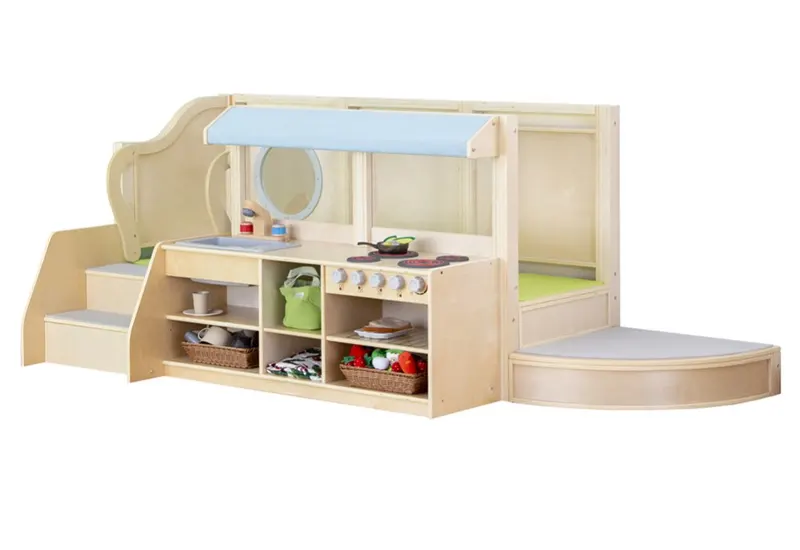
How Should Child Size Furniture Be Placed?
The placement of child size furniture in preschool classrooms should be intentional and purposeful. It should facilitate easy movement, encourage independence, and support the educational objectives of the classroom.
When layout furniture in a preschool, consider space maximization, safety, and accessibility. Proper furniture arrangement can streamline classroom activities, reduce disruptions, and enhance overall flow. This ensures a smooth transition between different learning segments.
Furniture can be chosen for accessibility and to foster independence, and children should be able to access learning materials easily, thus encouraging independent learning and exploration.
Safety is crucial in any educational environment. Furniture should be arranged to maintain clear visibility, prevent accidents, and ensure a quick response to emergencies.
1. Flexible Spaces
Design the classroom with versatile areas that can be adapted for different activities. Include:
- Activity Zones: Areas for reading, arts, play, and naps that can be reconfigured as needed.
- Open Spaces: For group activities and physical play to encourage movement and interaction.
2. Accessible Materials
Ensure that all learning materials and toys are accessible to children without adult help:
- Low Shelves: Store toys and materials on low shelves that children can reach.
- Clear Labels: Use pictures and words to label materials, helping children to find what they need and promote literacy skills.
3. Safe and Comfortable Environment
- Child-Sized Furniture: Use furniture that children can easily use independently, such as small chairs and tables.
- Safety Measures: Ensure all furniture has rounded edges, secure storage for hazardous materials, and ample space between furniture to prevent accidents.
4. Areas for Display
- Personal Space: Provide spaces where children can display their own work or belongings, such as individual lockers or cubbies.
- Community Board: Have a place where group projects or photos can be displayed, fostering a sense of community.
5. Nature and Sensory Elements
Incorporate elements that bring the outside world into the classroom:
- Natural Light: Use large windows to provide plenty of natural light.
- Plants and Natural Materials: Add plants, wood, stones, and other natural materials to create a more inviting and calming environment.
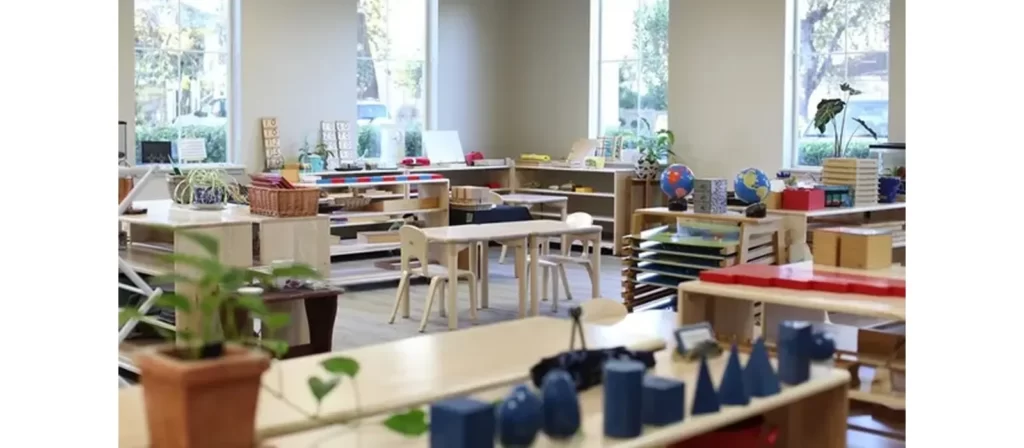
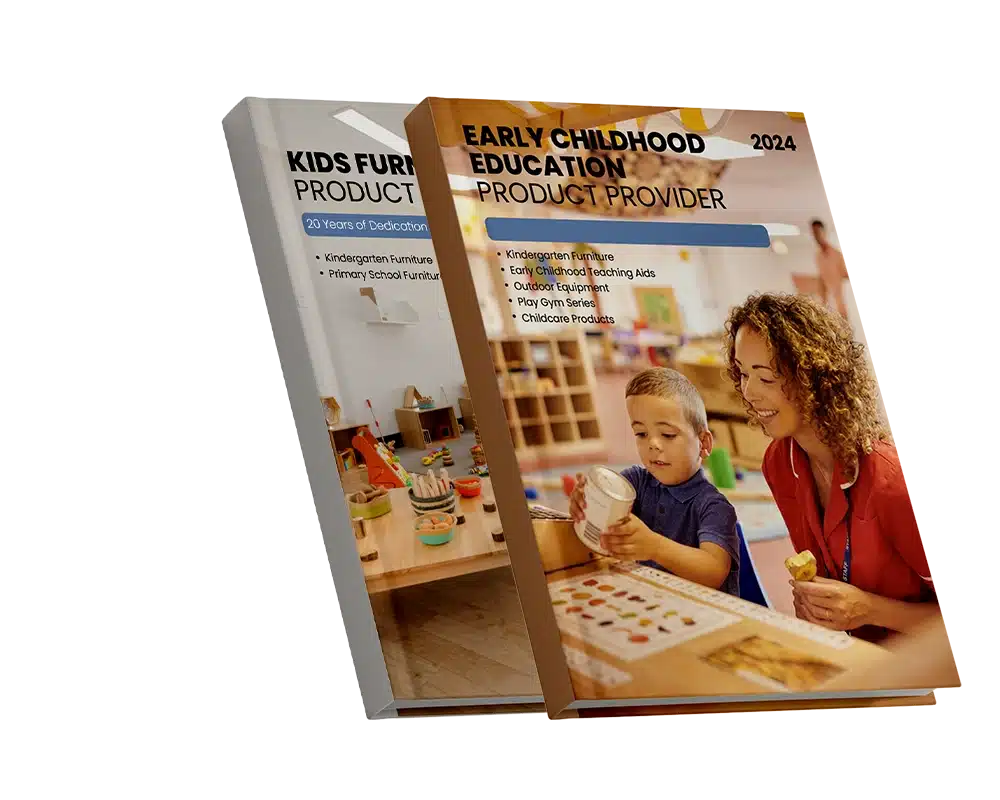

More related questions
How Should Preschool Furniture Be Arranged to Cater to Different Learning Styles?
Arrangements should be flexible, accommodating various learning styles, from quiet reading nooks to collaborative spaces, ensuring inclusivity and engagement for all children.
Can Furniture Placement Aid in Classroom Behavior Management?
Yes, strategic placement can help manage behavior by setting clear activity zones, thus reducing confusion and maintaining order in the classroom.
What Considerations Should Be Made for Inclusive Classrooms?
Furniture in inclusive classrooms should be arranged to support children with diverse abilities, ensuring that every child can participate and engage effectively.
How Often Should Classroom Furniture Be Re-arranged?
Regular adjustments to the furniture arrangement can keep the learning environment fresh and responsive to the changing needs of children.
Conclusion
In conclusion, using child size furniture is an important consideration for anyone working with young children. It promotes independence, physical development, and learning and creates a welcoming environment for children to learn and grow.
Child size furniture is more than just a functional element of a preschool classroom; it is the cornerstone of a child-centered learning environment. At Xiha Montessori, we are committed to providing high-quality, customized furniture supporting the child’s development. A small detail makes a big difference in early childhood education.

